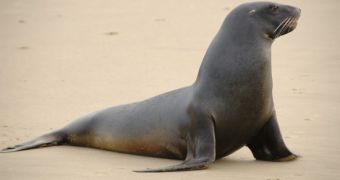Sea lions living in the Galapagos are getting dangerously thin. Surprisingly enough, this is not because they don't have enough food at their disposal.
A new study shows that, all things considered, sea lions inhabiting this corner of the world are losing their precious blubber because of people and their pets.
Conservationists say that, because they are constantly exposed to human-induced pollution and infectious diseases that pets such as cats and dogs often carry, Galapagos sea lions are experiencing a decline in their immune systems' ability to fight back environmental threats.
The weakening of their immune systems turns the marine animals into less efficient hunters. This means that they risk starvation whenever food resources are scarce.
Sources say that, after monitoring sea lions living on the Islands of San Cristobal for a period of time of up to eight months, a team of conservationists learned that not only were their immune systems in overdrive, but that their layer of blubber was not as thick as it was supposed to be.
The only explanation that the conservationists were able to come up with for this phenomenon was the fact that this colony of sea lions had no choice except share their natural habitat with humans, pets and other animals such as mice and rats.
“A tell-tale sign of an unhealthy sea lion is a thinner than normal layer of blubber, which is what we saw in the sea lions on San Cristobal. This was all the more notable as we didn't notice these patterns in sea lions on Santa Fe, where they live without the presence of people or pets,” Dr. Paddy Brock.
“The immune systems of San Cristobel sea lions were more active, perhaps indicating a threat of infectious disease, which could mean human activity is increasing the chance of potentially dangerous diseases emerging in the Galapagos sea lion,” the researcher further detailed on his and his colleagues findings.
The study documenting how human activity affects Galapagos sea lions was published in the June 28 issue of the scientific journal PLOS ONE.

 14 DAY TRIAL //
14 DAY TRIAL //